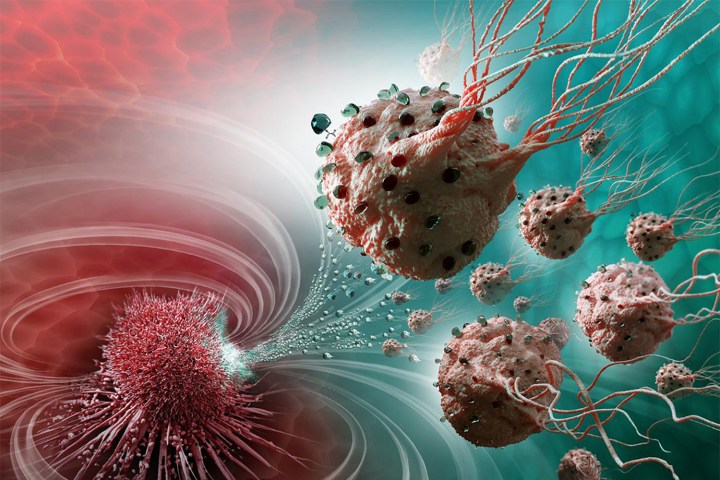
Once inside the tumor, the nanorobots’ job isn’t done. A sensor that measures oxygen concentration allows the bots to autonomously detect low-oxygen zones — which are active cancer areas, generally resistant to therapies — for direct drug delivery.
Although the researchers refer to the vessels as robotic agents, they’re actually organic, made up of small bacteria.
Dr. Sylvain Martel, Director of the Polytechnique Montréal Nanorobotics Laboratory’s, had the idea to propel drug-carrying nanobots with bacteria’s whip-like flagella and he decided it would be easier to use actual bacteria than to develop artificial ones. Realizing that he would need a way to “communicate” with these bacteria, he searched for an alternative.
“This is when I came across magnetotactic bacteria that could be directed by a magnetic field,” Martel told Digital Trends. “Since passing a current in an electrical wire generate an electromagnetic field, this provide the communication and navigation link between the computer and the bacteria acting as nanorobots.”
The resulting “legions” of nanorobots are composed of more than 100 million flagellated bacteria that navigate smoothly through bloodstreams and into tumors, according to the scientist.
In addition to the oxygen concentration sensor that leads them to the active cancer regions, the bots are equipped with magnetic nanoparticles inside the bacteria’s cells that can be controlled with an external magnetic field.
Martel thinks the transportation techniques developed for these bots will help physicians rethink medical intervention methods and reconsider the vessels used to deliver therapies and diagnostics. “Chemotherapy, which is so toxic for the entire human body, could make use of these natural nanorobots to move drugs directly to the targeted area, eliminating the harmful side effects while also boosting its therapeutic effectiveness,” he said in a press release.


